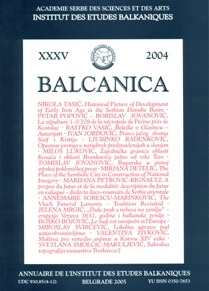“Pade prah sa nebesa na zemlju” – Erupcija Vezuva 1631. godine i balkanske zemlje
“...Ash Fell From the Skies to the Earth...” – The Eruption of the Vesuvius in 1631 ad and the Balkan Lands
Author(s): Jelena MrgićSubject(s): History
Published by: Balkanološki institut - Srpska akademija nauka i umetnosti
Keywords: eruption; Vesuvius; Balkan; 1631;
Summary/Abstract: After the most notorious eruption of the Vesuvius in 79 AD, the one that occurred on 16th December 1631 resulted in thousands of human victims and large- scale damage. According to modern volcanology studies, the amount of dust and ash emitted on this occasion was only three times smaller that in the famous eruption of Krakatau in 1883. Numerous historical sources registered the fall of volcanic ash, which is proved to be the true meaning of three Serbian marginal notes presented in this article. Anonymous monks in the monasteries of St. George near Pljevlja, Pološko and another one, which still cannot be precisely identified, reported the fallout of ash on Wednesday, December 7, according to the Julian, i.e. 17 according to the Gregorian calendar. Considering the velocity of ash clouds, it is assumed that in both cases it could have been the first thing they saw at dawn, on the day after the eruption (cf. the map in this paper). Along with the “black powder”, the same kind of historical sources – Serbian marginal notes, and The Chronicle of Fra Nikola Lašvanin – also provide the data on “red/bloody snow” on three separate occasions (1638, 1640 and 1690). These phenomena can be scientifically explained as deposits of desert dust from northern Africa brought by south–southwest air currents over the Balkan region. The last issue discussed in this paper is the possible connection between this particular volcanic eruption and short-term climate changes it may have caused in the Balkans.
Journal: BALCANICA
- Issue Year: 2004
- Issue No: 35
- Page Range: 223-239
- Page Count: 16
- Language: Serbian

